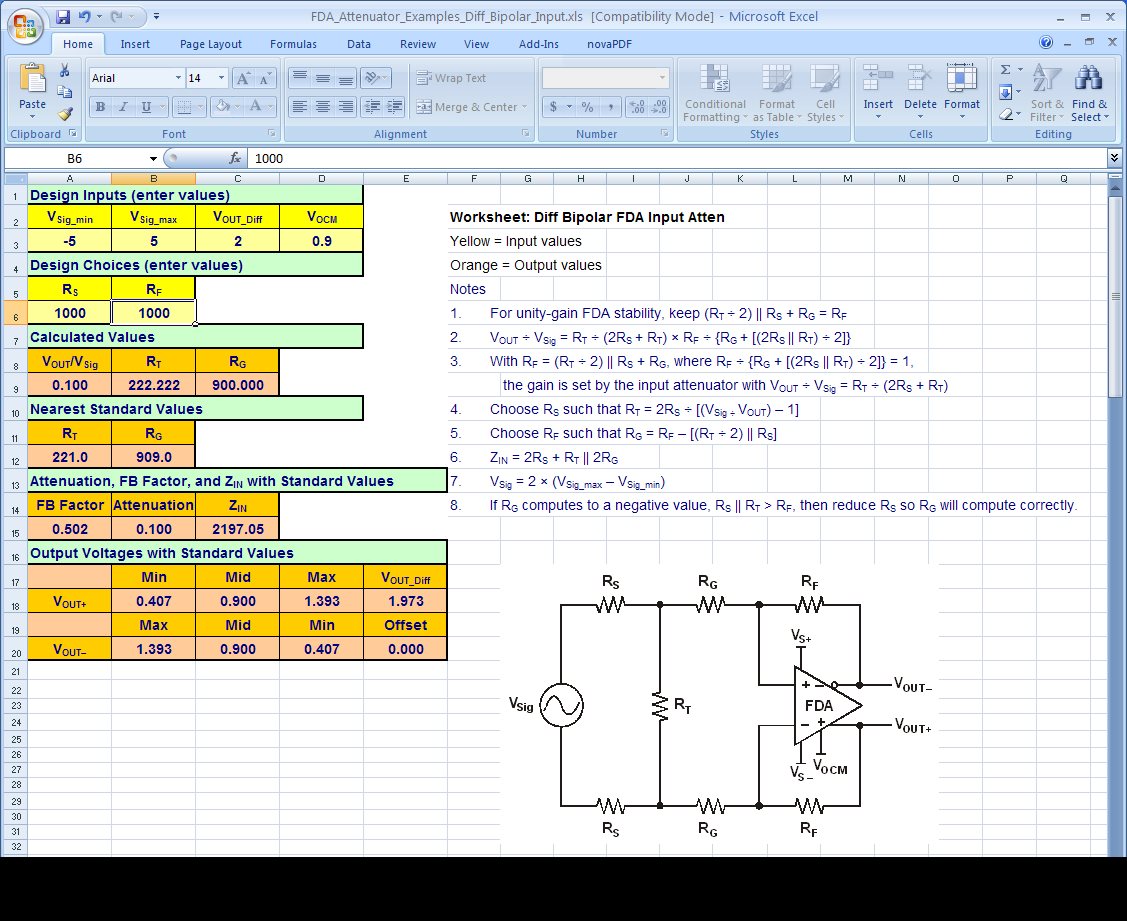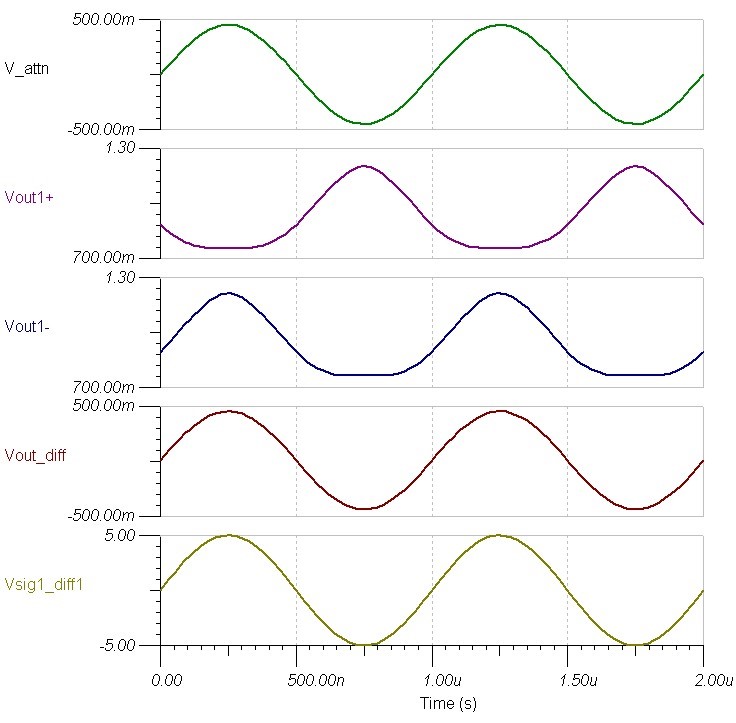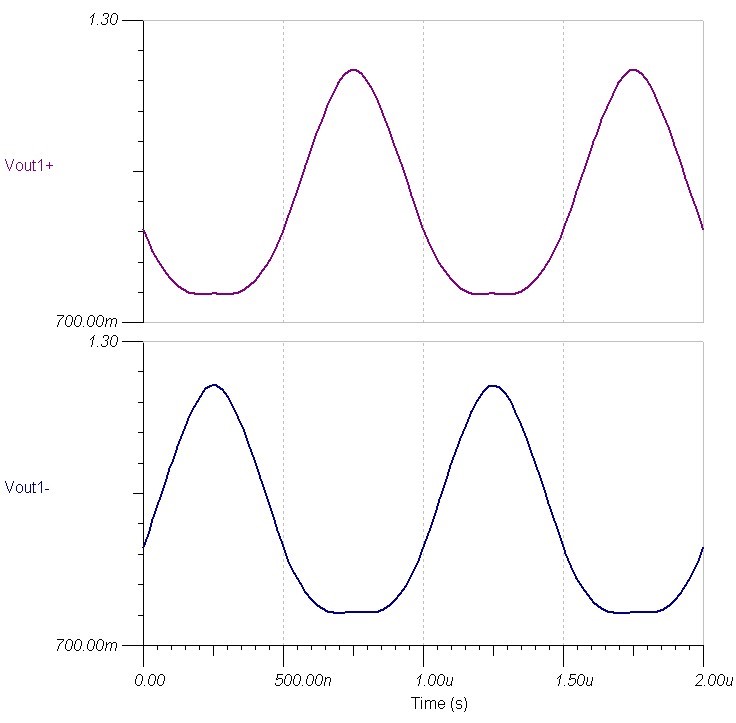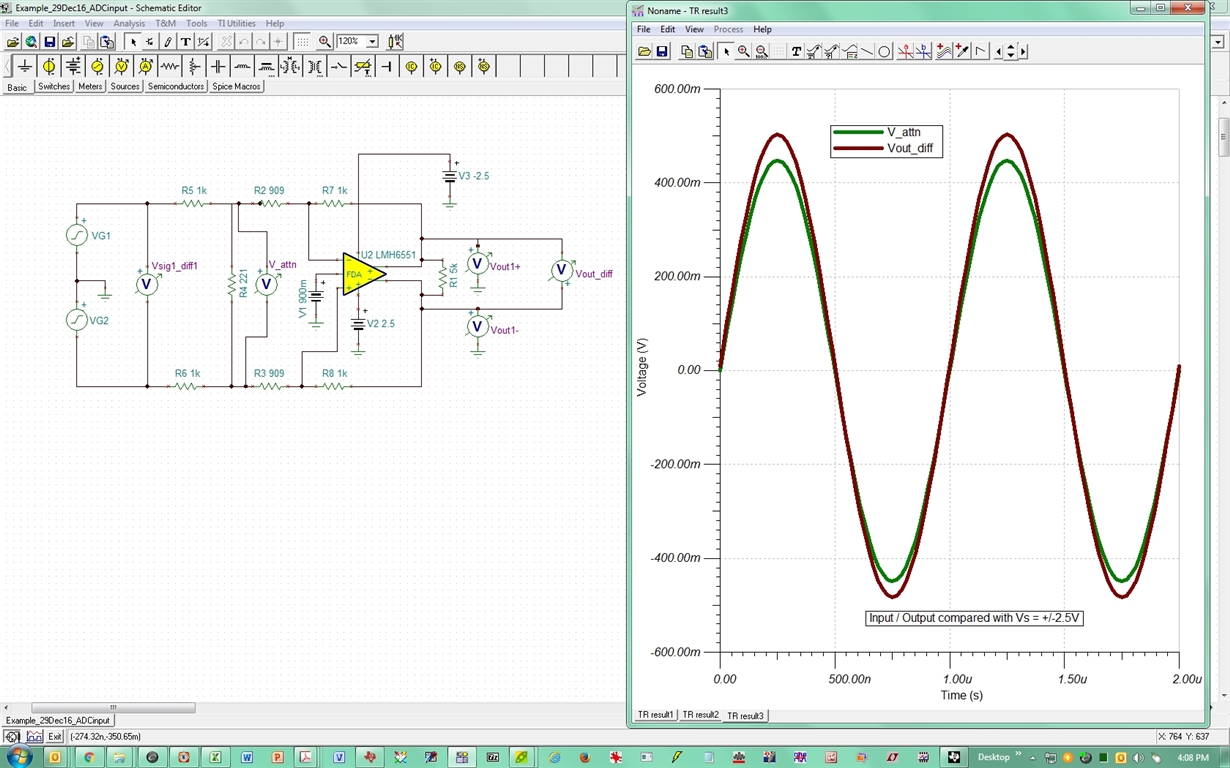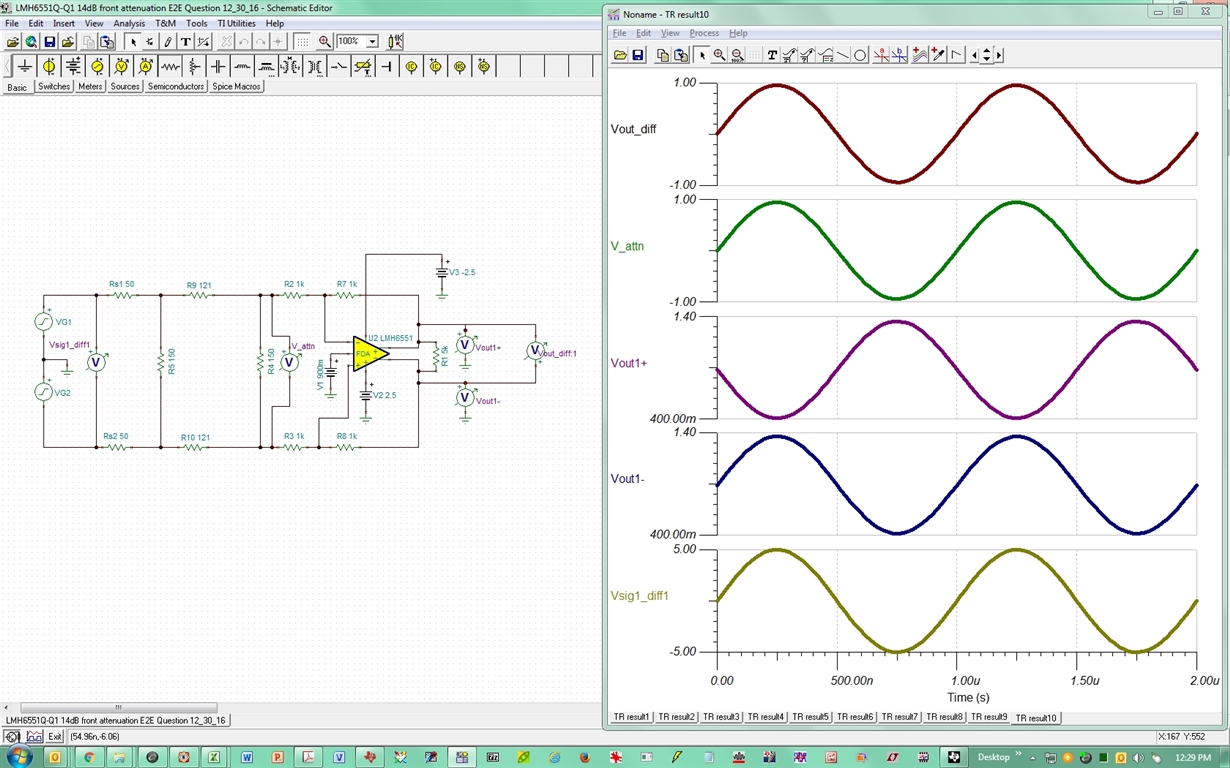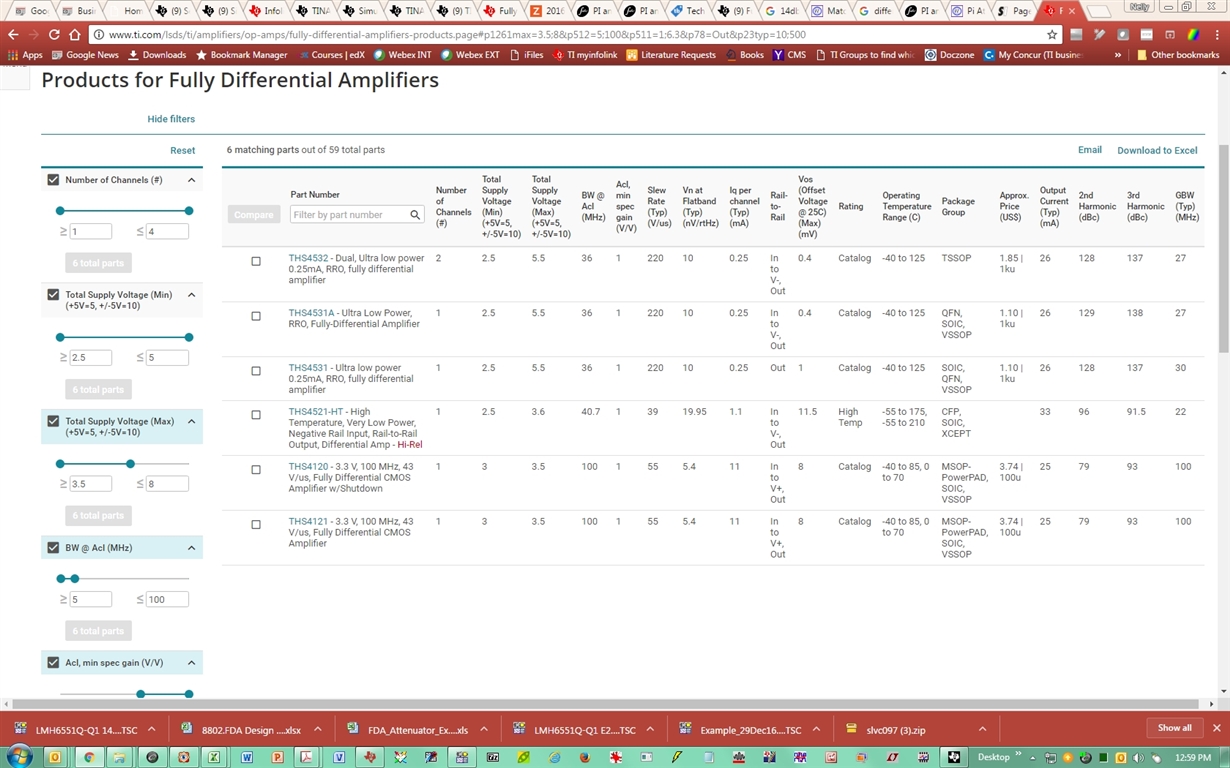Other Parts Discussed in Thread: TINA-TI, , THS4509, ADS42LB69, LMH6551, LMH6518
Tool/software: TINA-TI or Spice Models
Hello,
I need to interface a +/-5V (10Vp2p) signal to an ADC having an input range of 2Vp2p with a common mode voltage of 0.9V.
I chose the value for the different resistors (reference designators can be seen in the attached screenshot of the excel file; this excel file came with slyt336 application note from TI).
To verbalize the setup:
1) Vcm of the FDA is set to 0.9V
2) V+ to 5V (although I suppose 2.5V is sufficient, am I right?)
3) V- to GNC (since the output only needs to have a positive swing)
4) The resistor values are Rf = 1K, Rg = 909E, Rt = 221E, Rs = 1K.
Attached is the TINA schematic/simulation setup and following is the schematic screenshot
There are three questions:
1) I don't see the swing range as shown by the excel file
2) Vout+ & Vout- are distorted but their difference "seems" correct. Is this supposed to happen and is it correct to implement?
3) Vout_diff voltmeter is inverted in-order to see if the input and output waveforms are similar. It can be seen that there is a small dc-offset introduced in the output.
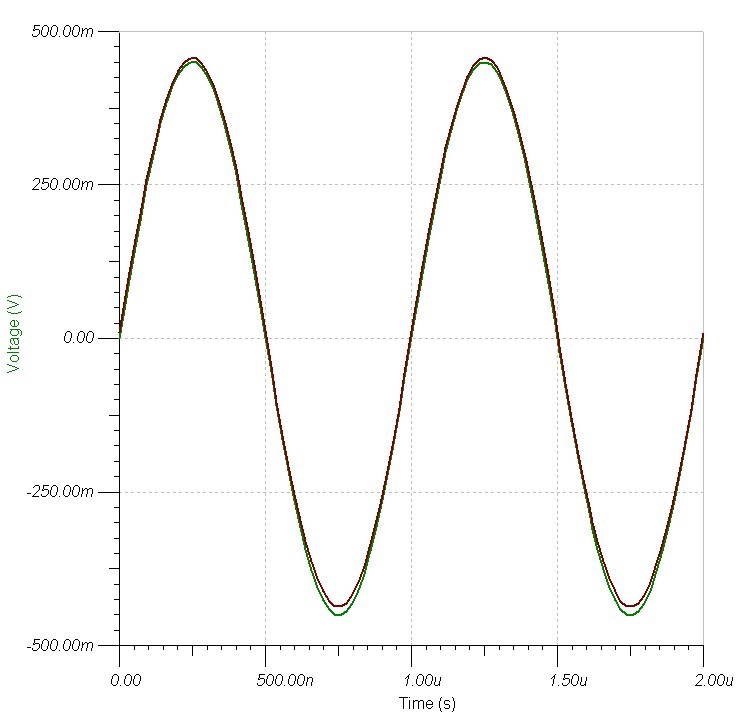 1205.Example_29Dec16_ADCinput.TSC
1205.Example_29Dec16_ADCinput.TSC
Thank you for your time in answering my questions,
Regards.


